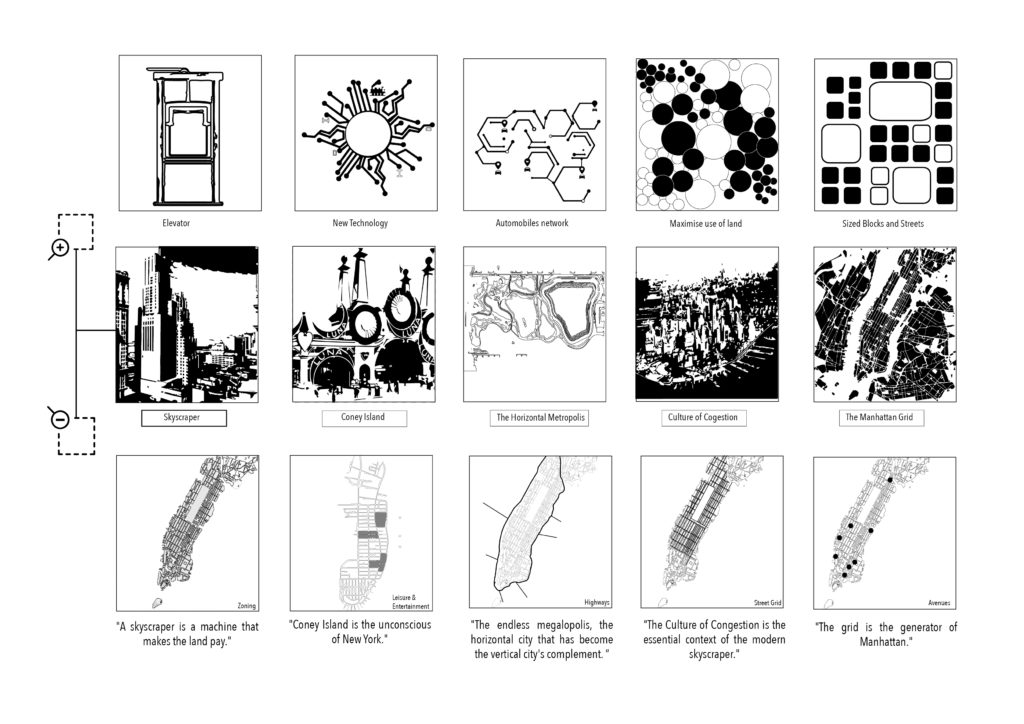This blog is a review of the book “Delirious New York” written by Rem Koolhaas.
“The future is no longer about power, but about bandwidth.” Rem Koolhas

Rem Koolhaas wrote a novel titled “Delirious New York” that outlines the evolution and background of Manhattan’s design and urbanism. Koolhaas wrote this book because he desired to be a specific architect. In an interview, he expresses how he intends to create a workspace and exploration area for himself.
Koolhaas argues that Manhattan’s unique urbanism, with its tall skyscrapers and complex network of streets and subways, was not the result of deliberate planning but rather emerged organically as a response to the city’s rapid growth and economic expansion. He traces the evolution of New York’s architecture and urbanism through a series of key moments, as described in the diagram.
He presents a portrait of the New York metropolis as a dynamic, ever-changing, and unexpected metropolis. To truly comprehend the city’s distinctive character and significance, he emphasizes how important it is to grasp the past and context of its architecture and urbanism.
The diagram below is an attempt to understand the key innovations that took place in Manhattan and had a greater impact on the world. It pins down five main innovations.
The invention of the Otis elevator gave rise to skyscrapers, which eventually developed the street grid and zoning regulations. The second important innovation was Coney Island, which contributed to the development of new forms of leisure and entertainment that were caused by new technologies. The horizontal metropolis was about automobiles, the development of new infrastructure, and transportation networks that enabled the movement of people and goods across large distances. Following the horizontal metropolis, the culture of congestion maximized land use and density. The social and cultural dynamics of the city, including the desire for excitement, novelty, and interaction the most important innovation was the Manhattan grid, which gave rise to systematic blocks, grids, and avenues. It also describes the social, economic, and political factors that led to its development, including the desire for efficiency, equity, and development.
The zoom-in and zoom-out representations give an overview of the Manhattan manifesto as described by Koolhaas.

